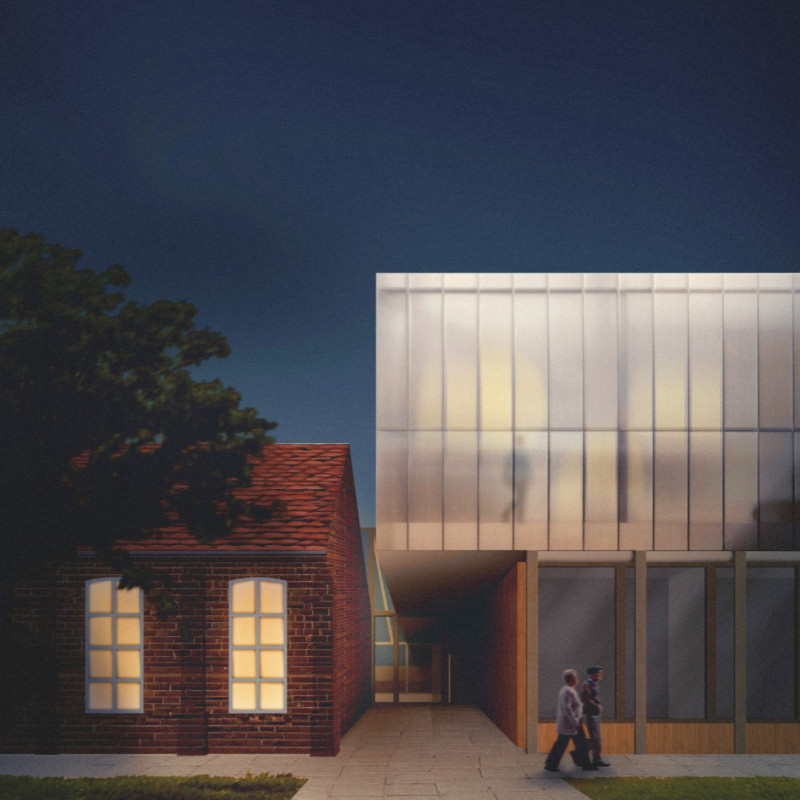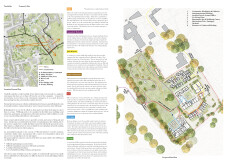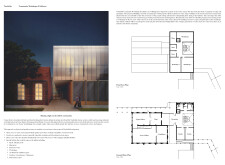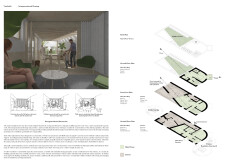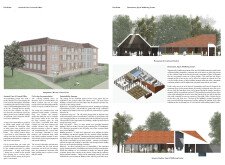5 key facts about this project
## Concept Overview
The Vinefields project is located in Bury St. Edmunds, England, designed to rejuvenate the local community through a diverse range of facilities. This initiative includes community workshops, intergenerational housing, assisted care, and a wellness center, all aimed at enhancing connectivity and inclusivity, particularly for the elderly population. The project strategically engages with its surrounding area, establishing essential links to nearby landmarks such as St. Edmundsbury Cathedral, parks, and local amenities, promoting social interaction and reducing isolation.
## Spatial Connectivity
The site plan prioritizes an extensive network of pathways that facilitate fluid movement between various facilities, encouraging residents to engage with both the built environment and each other. Outdoor experiences are integral to the design, with communal gardens serving as focal points for socialization and leisure. The layout emphasizes scenic views and accessibility to nature, reflecting the project’s commitment to environmental integration and enhanced quality of life.
### Material Selection and Sustainability
A careful selection of materials underpins the sustainable approach of the Vinefields design. Primary materials include brick for structural integrity and a sense of place, glass to foster transparency and connectivity between interiors and exteriors, and timber for warmth in facades and roof structures. The design deliberately incorporates community gardens, emphasizing biodiversity and sustainable landscaping practices that enhance the ecological footprint of the development.
### Functional Spaces
The layout features key elements designed to encourage community interaction. Community workshops and galleries are designed with expansive glass elements to promote visibility and engagement with artistic initiatives. Intergenerational housing configurations allow for both privacy and communal living, accommodating the needs of elderly residents alongside younger families. The assisted care section aids those requiring support while maintaining an emphasis on independence. Complementary facilities such as a restaurant, spa, and wellness center are designed to integrate social and health-related activities, reinforcing communal bonds within inviting spaces.


